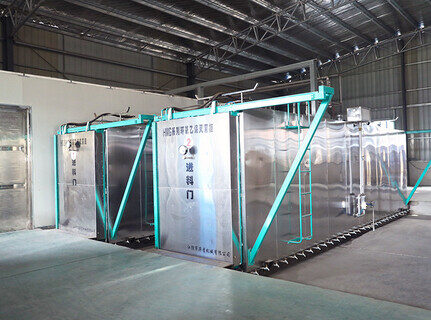Sterilization is the physical or chemical removal of all microorganisms (including budding spores) from instruments, dressings and other objects to a sterile level to avoid the occurrence of infections and the spread of disease caused by surgical instruments during use.
Sterility refers to the probability of survival of a single microorganism after sterilization, also known as the sterility assurance level (SAL), which is usually expressed as 10-n. Currently, it is agreed that SAL10-6 is the level of sterility.
Sterilization of surgical instruments can effectively prevent hospital-acquired infections and reduce the rate of hospital-acquired infections. Medical devices that come into contact with human tissues, organs, broken skin, and broken mucous membranes are high-risk items. Common high-risk items include: puncture needles, biopsy forceps, laparoscopes, and implantable medical devices. These items have a high risk of infection and must be sterilized prior to use.
Common sterilization methods include: autoclaving, plasma sterilization with hydrogen peroxide, ethylene oxide sterilization, ionizing radiation sterilization and dry heat sterilization.
High-pressure steam
Principle: Killing microorganisms mainly by irreversible coagulation and denaturation of enzymes and proteins in microorganisms.
Applications: Mainly used to treat water, pharmaceuticals, regulated medical waste and non-porous items with surfaces that are directly accessible to steam. For perforated loads and instruments, the general sterilization temperature and time are 132-135 °C for 3-4 min. The commonly used sterilization temperatures are 121 °C and 132 °C.
Advantages: non-toxic, environmentally friendly, easy to control and monitor the process, sterilization is fast and effective, the sterilization process is minimally affected by organic or inorganic contaminants, the sterilization cycle time is short, and it can effectively penetrate instrument packages and lumen-type instruments.
Disadvantages: damage to heat-sensitive instruments, repeated sterilization exposure can damage precision surgical instruments, possible rusting of instruments due to wet packs, potential risk of scalding.
Hydrogen peroxide plasma
Principle: Hydrogen peroxide plasma has high oxidative activity and kills microorganisms by destroying cellular proteins, enzymes and nucleic acids.
Application: For sterilization of heat- and moisture-intolerant medical supplies.
Advantages: safe and environmentally friendly, no toxic residues, sterilization cycle of 28-75 min, no analysis required, suitable for sterilizing heat and moisture sensitive items, easy to operate, install and monitor, compatible with most instruments.
Disadvantages: not suitable for paper fibers, cotton and linen, liquid items, small sterilization chamber size (50-270 L), not suitable for lumpectomy or instruments with long and thin lumen, requires synthetic packaging (e.g. polypropylene packaging or polyolefin tubing bags), hydrogen peroxide above 1 ppm may be toxic.
Ethylene Oxide Gases
Principle: Ethylene oxide induces cell death by alkylating proteins, DNA, RNA and irreversibly preventing normal cell metabolism and replication.
Application: Used for high or medium risk items that are not resistant to moisture or heat.
Advantages: can sterilize heat- and moisture-sensitive medical devices without harmful effects on their materials, can effectively penetrate packaging materials and tubular instruments, single-dose cartridges and negative pressure operation reduce the risk of gas leakage, easy to handle and monitor, compatible with most instruments.
Disadvantages: high cost and potential hazards to patients and medical personnel. Requires long analysis time to remove EO gas residues, small sterilizer size (110-250L), toxic, carcinogenic and flammable, tanks must be stored in explosion-proof storage cabinets, requires long sterilization cycles and analysis time.
Ionizing radiation
Principle: γ-rays radiated by radioisotope cobalt 60 are used as effective sterilization factor. γ-rays can induce cells to produce free radicals and destroy normal metabolism, thus leading to inactivation of microorganisms.
Application: Low-temperature sterilization method applied to many medical products (e.g. tissue transplants, pharmaceuticals, medical devices).
Advantages: no special requirements for temperature environment can be carried out at room temperature, uniform and thorough sterilization, fast and continuous operation. Suitable for mass sterilization.
Disadvantages: high sterilization cost, some products may change their nature after radiation, pay attention to safety protection issues.
Dry heat sterilization
Principle: Bacterial death by high temperature oxidation of cellular components.
Application: For materials that are not resistant to moist heat or cannot be penetrated by moist heat (e.g. powders, petroleum products, sharp instruments). The most common times and temperatures are 170 °C and 60 min, 160 °C and 120 min and 150 °C and 150 min.
Advantages: non-toxic, environmentally friendly, easy to install dry heat cabinets, relatively low operating costs, penetrates materials, non-corrosive to metals and sharp objects, etc.
Disadvantages: slow penetration of sterilization heat and microbial killing, time-consuming sterilization. High temperature is not suitable for most materials.
In addition to the above sterilization methods, sterilization of medical devices also involves other sterilization techniques, such as peracetic acid sterilization, ozone sterilization, ultraviolet irradiation sterilization, microwave sterilization, filtration and sterilization methods. Due to the relatively small number of applications, they are not summarized in detail in this review. There are many different sterilization methods, and the appropriate sterilization method should be selected according to the characteristics of the instruments to be processed in the application.








